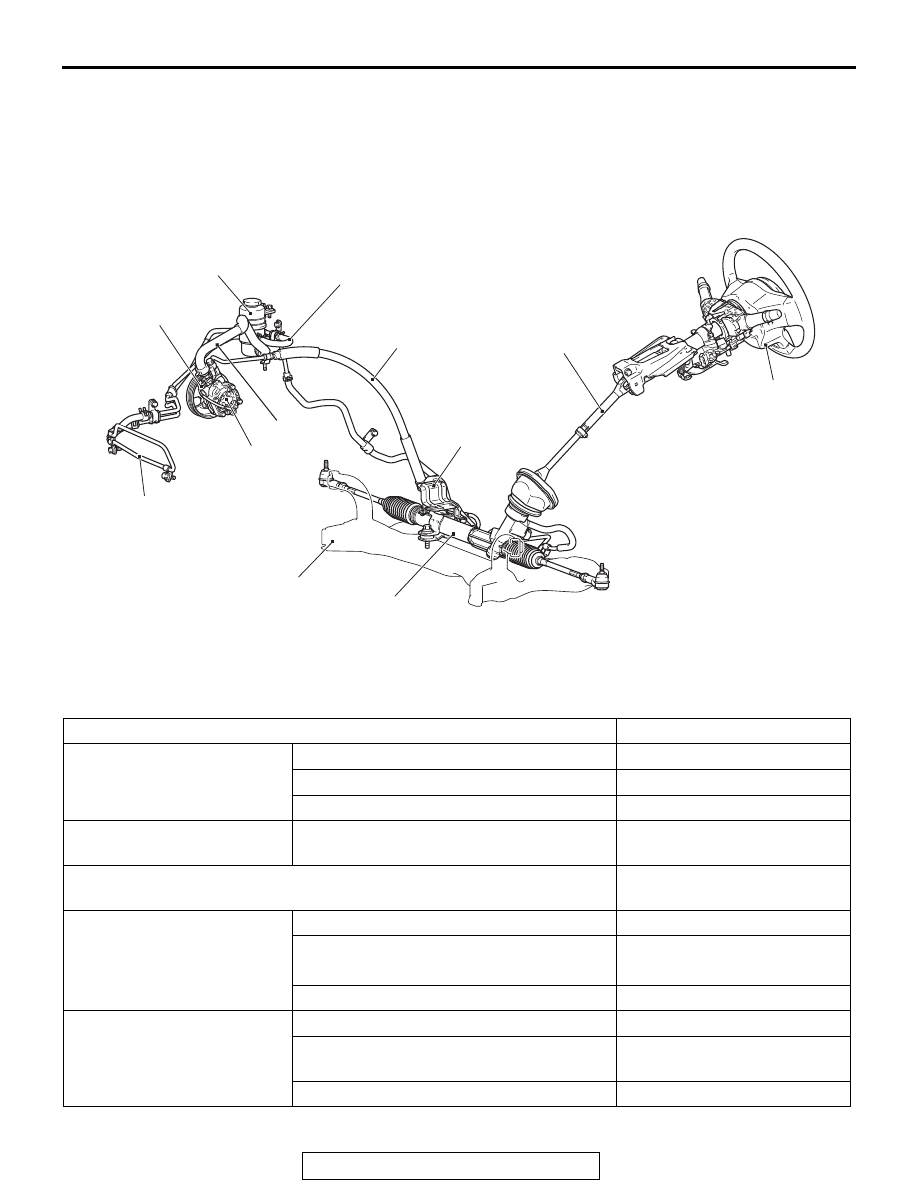Mitsubishi Lancer Evolution X. Manual - part 222

GENERAL INFORMATION
TSB Revision
POWER STEERING
37-3
GENERAL INFORMATION
M1372000101482
• The steering wheel has three spokes. All vehicles
are equipped with SRS (Supplemental Restraint
System).
• The steering column has a shock absorbing
mechanism and a tilt steering mechanism.
• The steering system uses a vane oil pump with a
fluid flow control system, so that steering effort
varies with engine speed.
GENERAL SPECIFICATIONS
M1372000200538
AC710604 AD
Steering wheel
assembly
Steering column
shaft assembly
Pressure hose
assembly
Oil reservoir
Suction hose
Oil pump assembly
Steering gear and linkage
Return hose
Front axle crossmember
Heat protector
Pressure switch
Cooler tube assembly
Item
Specification
Steering wheel
Type
Three-spoke type
Outside diameter mm (in)
365 (14.4)
Maximum number of turns
3.16
Steering column
Column mechanism
Shock absorbing mechanism
and Tilt steering mechanism
Power steering type
Integral type (Engine
speed-dependent type)
Oil pump
Type
Vane type
Basic discharge amount cm
3
/rev. (cu
in/rev)
9.0 (0.55)
Reservoir type
Separate type (Resin made)
Steering gear
Type
Rack and pinion
Stroke ratio (Rack stroke/Steering wheel
maximum turning radius) mm/rev (in/rev)
65.97 (2.6)
Rack stroke mm (in)
150 (5.9)